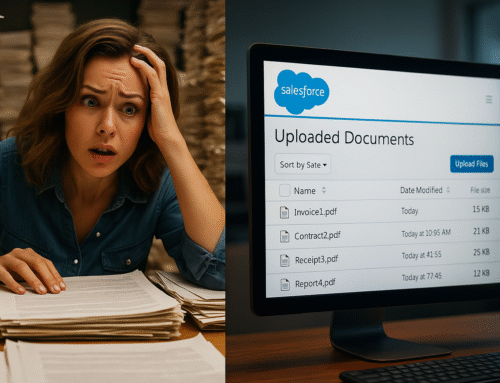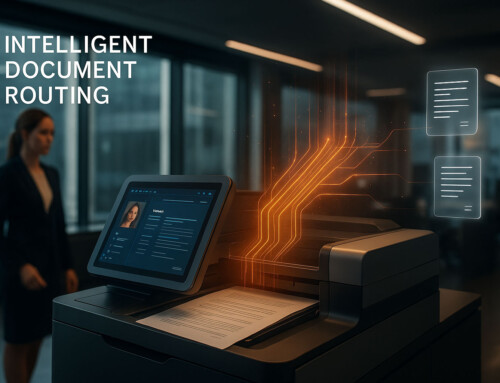When you have learned of the effort it takes to feed large volumes of paper into a flatbed scanner, be it one-page or multi-page scanner, have you ever yearned for a better alternative?
Nothing is easier than to assume that you have no other choice. Where in reality you do. Sheetfed scanners are the best option for anyone wanting to scan large volumes of paper.
Also referred to as an automatic document scanner or an ADF scanner, a sheetfed scanner is designed for scanning loose sheets of paper. It enables you to digitize documents at the speed of light, taking your productivity levels through the roof.
And while it is true that flatbed scanners are more compact than sheetfed scanners and can scan almost anything placed on top of the glass. Sheetfed scanners can scan paper documents more quickly. This makes them a must-have if you regularly scan large volumes of paper.
Read on if scanning documents isn’t your favorite pastime.
How does a Sheetfed Scanner Work?
Sheetfed scanners work similarly to printers.
- You put the paper documents you want to scan in their tray
- A small motor rolls the piece of paper inside the scanner
- The sheetfed scanner’s software identifies printed letters on the page
- The scanner’s software converts the printed words into digital text
Unlike their flatbed counterparts, sheetfed scanners don’t require you to switch documents by hand. You just have to place the stack of papers in the tray, and let the scanner take care of the rest. This makes sheetfed scanners a better option when you need to scan a large number of documents.
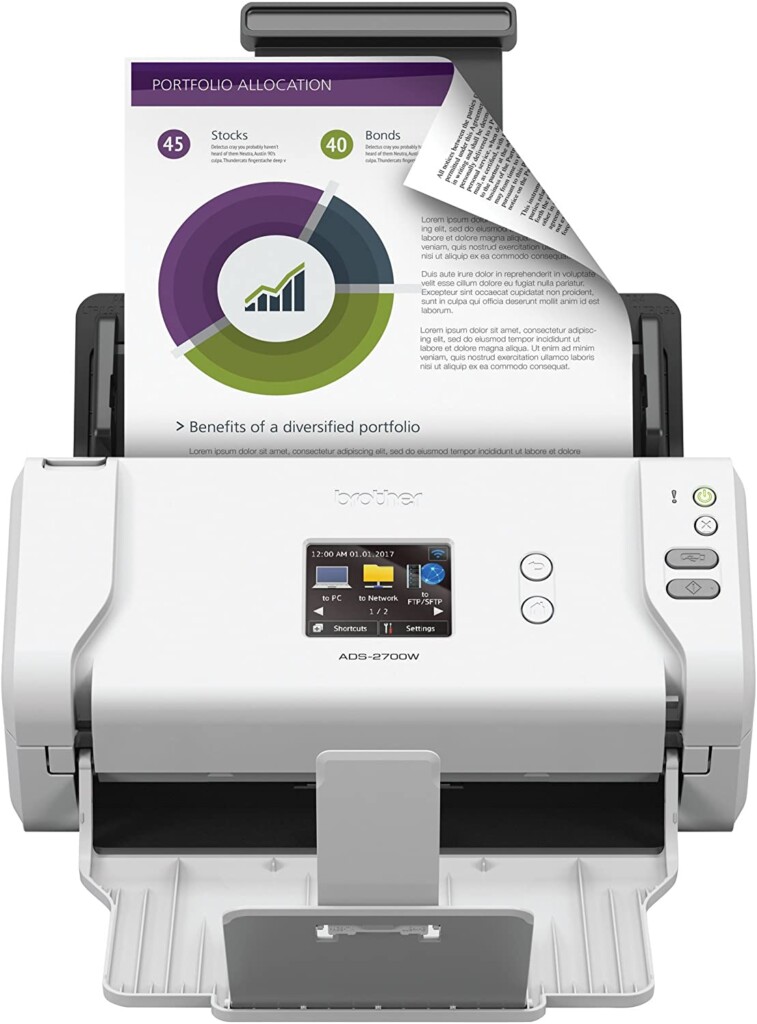 Brother ADS-2700W – Best Sheetfed Scanner
Brother ADS-2700W – Best Sheetfed Scanner
The Brother ADS-1600W is our top pick for several reasons. Weighing just 5.8lbs and measuring 5.8 by 11.8 by 7 inches, this model is far more compact than its competitors. Both these features make this model ultra-portable and prevent it from occupying much space on the table.
The ADS-2700W supports wireless networking. The Wi-Fi connectivity makes it compatible with almost every device you can think of. The ADS-1600W also offers USB and Ethernet connectivity and comes with an automatic document feeder with a capacity of 50 pages.
You won’t have any complaints about its speed, either. Brother claims that this model can churn out an impressive 35 pages per minute (for single-side pages) and 50 images per minute (for double-side ones). No matter how you slice it, this scanner is pretty fast.
Next comes its multiple-platform compatibility. Most sheetfed scanners you see on the market only work with MAC and Windows. The Brother ADS-2700W is different. This model also works with Linux and comes with a clever slot to let you scan plastic IDs.
That said, we have one complaint about this model. It doesn’t come with a built-in battery, requiring you to either plug it into an AC outlet or connect the micro USB 2.0 cable (not included in the package) to your computer. Keep in mind that its scanning speed nosedives when charging via USB.
| Pros
– Incredibly fast scanning and text recognition – Comes with a color touchscreen – Has a strong software bundle |
Cons
– Lacks a built-in battery |
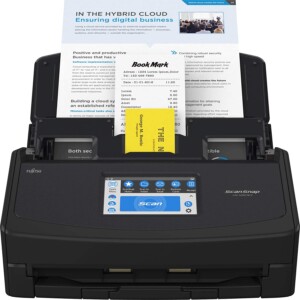 Fujitsu ScanSnap iX1600 – Best Scanner for Home Organization
Fujitsu ScanSnap iX1600 – Best Scanner for Home Organization
Easy to use, well-built and fast, the Fujitsu ScanSnap iX1600 is one of the best scanners for home organizations and small offices. And while it does cost higher than our top pick, this model has multiple features to justify its (slightly) elevated asking price.
The first of those features is a 50-sheet single-pass automatic document feeder, something that our top pick also has. The ADF will give you the ability to feed several pages into this scanner at once, saving them from the nuisance of having to manually insert each piece of paper.
This model’s compatibility is also top-notch. Its USB port lets you connect a single computer to the ScanSnap iX1600. Meanwhile, the Wi-Fi connectivity gives you the option to connect a computer, smartphone, or wireless network to this sheetfed scanner.
ScanSnap lets you create up to five separate user profiles. Each user will be provided with a customized home screen showing selected apps and tools, workflow profiles, and other options. The users will also have the option to use the existing template or create a scanning profile from scratch.
You can also use the ScanSnap to scan directly to your Android and iOS devices as well as your PC. ScanSnap can also scan multiple files directly to the cloud. Its built-in document recognition feature can even send all the digitized files to separate cloud services concurrently.
| Pros
– Comprehensive ScanSnap software – High speed (40 pages per minute) – Has an Automatic Document Feeder |
Cons
– Fails to provide Ethernet support |
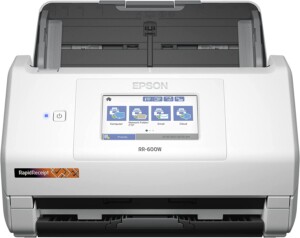 Epson RR-600W
Epson RR-600W
The Epson RR-600W has everything you might need in a sheetfed document scanner. It is fast and accurate, comes with highly useful software, and doesn’t only scan but also categorizes financial data extracted from invoices, receipts, and other financial reports.
This model also comes with a spacious 100-sheet ADF. Those of you who are already using sheetfed scanners with ADF might appreciate how big this size is. As most of this model’s competitors, including the one reviewed above, can handle at most 60 sheets at once.
Epson has also surprised us with this model’s duty cycle. It claims that the RR-600W can outlast 4,000 scans, which is a huge number – you’d have to load this model’s ADF 40 times a day with 100 times to achieve it. Among models that we reviewed, only our top pick has a higher daily volume rating.
This model is one of the very few that achieve high speed without sacrificing accuracy. Epson rates that it can scan 35 single-sided pages per minute and 70 double-sided pages per minute. We tested this model at 300dpi with Smart Accounting Edition and can confirm that the rating is almost accurate.
That isn’t to say that everything about this model is excellent. We aren’t big fans of the fact that its ScanSmart software isn’t supported on mobile devices. Neither are we too keen on its weight – this model weighs 8.1 pounds, and its dimensions, already sizeable, triple when you open its trays.
| Pros
– Available at a competitive asking price – Loaded with a strong software bundle – Has a massive 4.3-inch color touchscreen |
Cons
– Isn’t the most compact or lightweight |
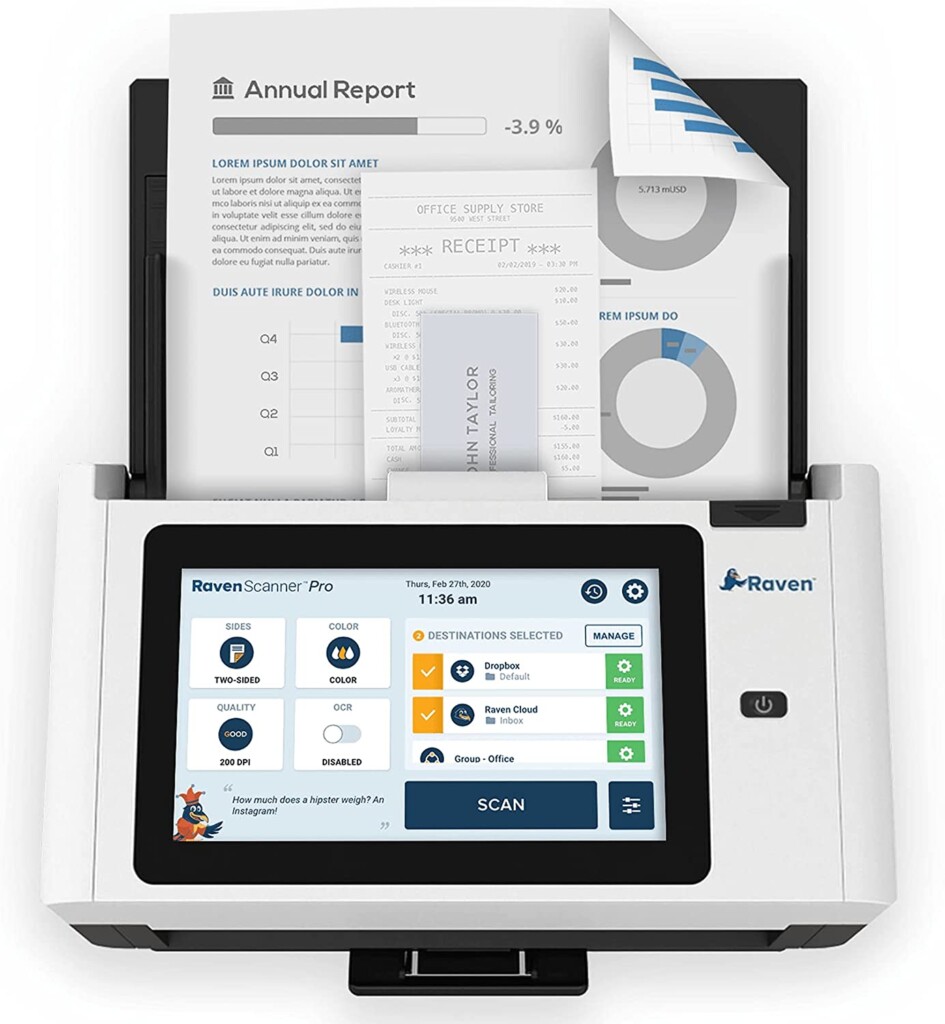 Raven Pro Document Scanner
Raven Pro Document Scanner
The Raven Pro Document Scanner offers a combination of features that you rarely get in one model. It is fast, self-contained, and highly accurate when it comes to digitizing paperwork. Its built-in software and user-friendly onboard interface also make it an excellent option.
Like the Epson RR-600W, the Raven Pro also comes with a 100-sheet automatic document feeder. This is about as big an ADF as most desktop document scanners can provide. Another feature that sets this model apart from the competition is its daily duty cycle of 6,000 pages.
Its connectivity is also second to none. The Raven Pro lets you use its USB connection to scan digitized files to a single computer. Or you can use its built-in Wi-Fi or Ethernet to connect the Raven Pro to your local area network. Its USB port also lets you connect a mouse and keyboard.
The utility of this model’s onboard interface surprised us. Like a fully-dedicated scanner app, the interface lets you control resolution, file type, destination, file name, and much more. It also gives you the option to create separate profiles for separate users and set dedicated settings for each profile.
What’s more, the Raven Pro comes loaded with multiple apps. Some of them help you scan paperwork to famous cloud sites, such as Google Drive, Microsoft One Drive, and Dropbox. And if you ever run out of space on your cloud storage, you can turn to the free Raven Cloud account offering unlimited space.
| Pros
– Has a 100-sheet ADF – Offers free unlimited cloud space – The onboard interface is highly slick |
Cons
– Doesn’t have a dedicated iOS or Android app |
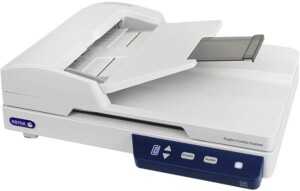 Xerox Duplex Combo Scanner
Xerox Duplex Combo Scanner
The Xerox Duplex Combo Scanner offers you the best of both worlds. This model combines an entry-level flatbed photo scanner with its high-end sheetfed document counterpart. Throw into the mix its powerful software, and you won’t have much to complain about this ultra-affordable scanner.
One of the things we liked the most about this scanner was its minimalist control panel. The control panel only has four options: Up and Down arrows for letting you scroll through its software and Simplex and Duplex buttons for starting single- and double-sided scan sessions, respectively.
However, these aren’t the only functions you can perform with this scanner. The included Visioneer OneTouch scanner interface lets you handle everything else, including resolution, file type, location, and file destination. The rest of the functions are taken care of by the bundled software.
Among the bundled software, our favorite is the Abbyy Fine Reader Sprint. It’s one of the best OCR software for converting scanned text to editable text. Then comes the Abbyy Business Card Reader, which does the same with business cards and archiving applications.
Lastly, the Duplex Combo boasts a speed of 25 pages per minute for single-sided scans and 50 images per minute for double-sided scans. Its daily duty cycle stands at 1,500 scans.
| Pros
– Extremely pocket-friendly – Lightweight and compact – Useful software bundle |
Cons
– Doesn’t offer Wi-Fi and mobile connectivity. |
How to Choose the Best Sheetfed Scanner?
Sheetfed scanners come in all shapes and sizes. Some offer speed that is just about enough for personal use. Others can handle a much larger volume of work. Regardless of whether you need a sheetfed scanner for office or personal use, there are certain features you want to keep an eye on.
Document Volume
How many scans do you have to do daily?
If you have to scan large batches of documents now and then, you might be better off with a high-volume document scanner. Conversely, if you’re buying a sheetfed scanner for personal use, its document volume should be the least of your worries.
Resolution
Resolution is measured in DPI (dots per inch). The higher a scanner’s DPI rating, the better quality scan results you’ll get to enjoy. If you scan handwritten text once or twice a month, a higher resolution will be required, or else the scanned result might turn out to be illegible.
Speed
A scanner’s speed has a direct influence on its price. Paying a higher asking price might make sense if you’re an active user who scans large volumes of work every day. But if you’re in the market for a personal scanner, you may want to opt for a model with average speed.
Document Feeder
Are you a business owner whose employees have to do a lot of scanning every day? You might be better off with a scanner equipped with an ADF. The Automatic Document Feeder will save the person performing the scanning from standing for hours on end to manually insert and remove pages.
Compatibility
Most sheetfed scanners you see on the market work with both PC and Mac. Only a few, however, extend this courtesy to Linux or Chromebook. Before selecting any model, make sure it’s compatible with your operating system (OS).

